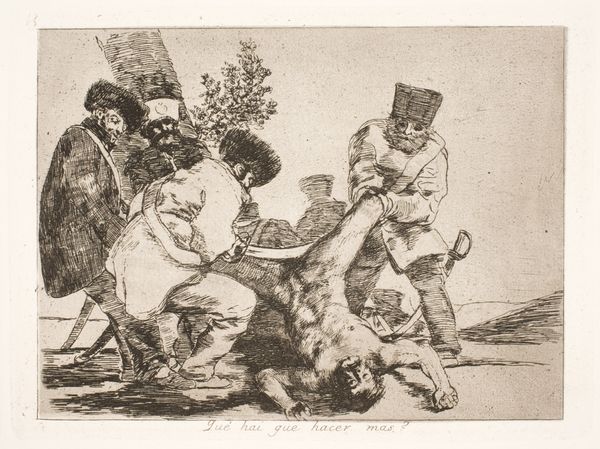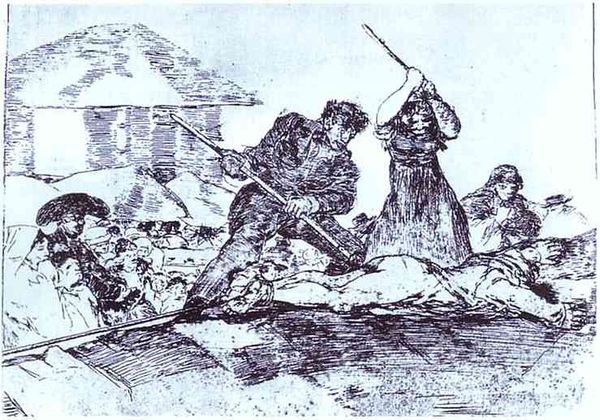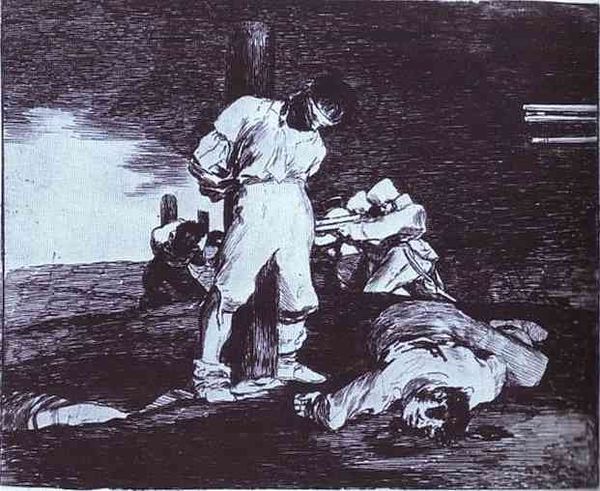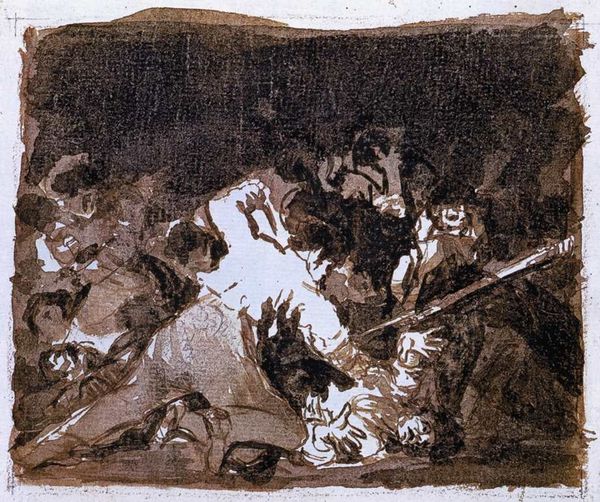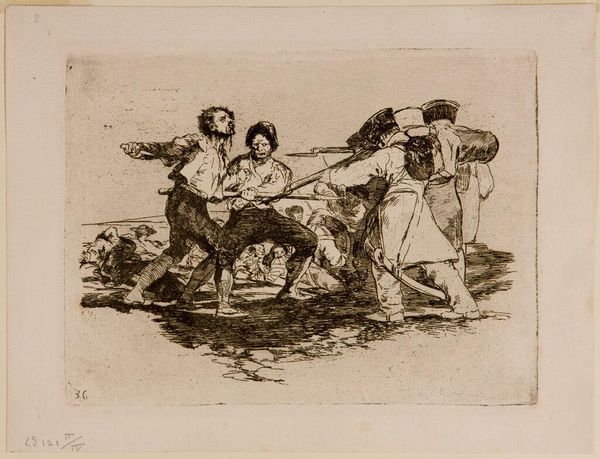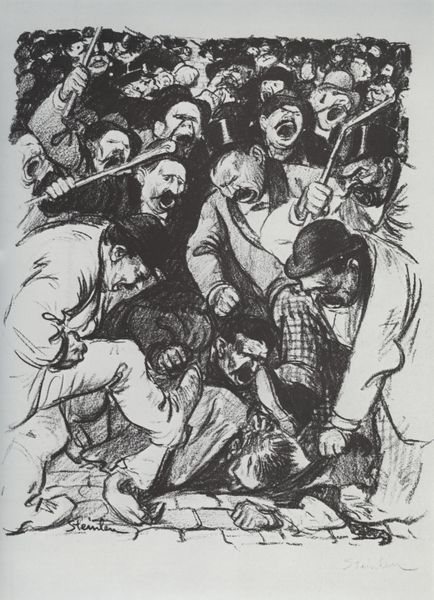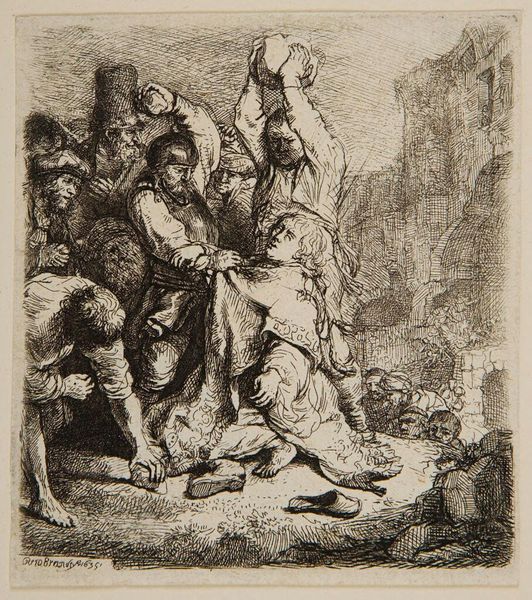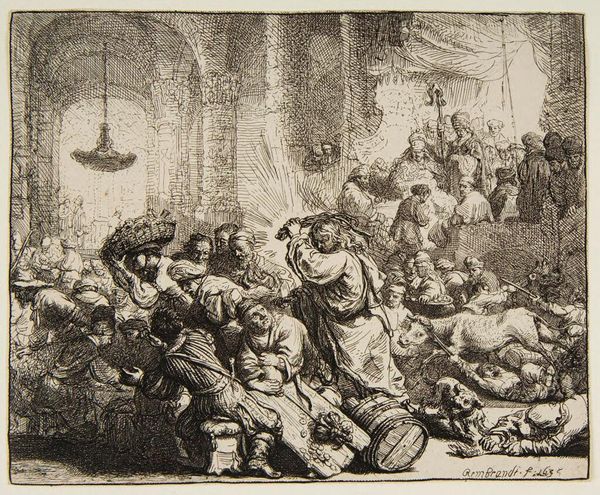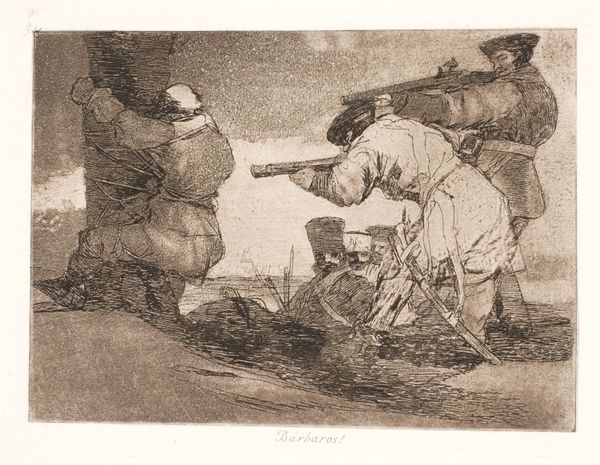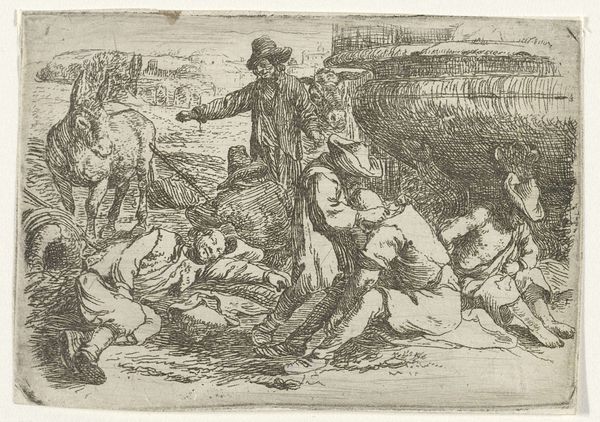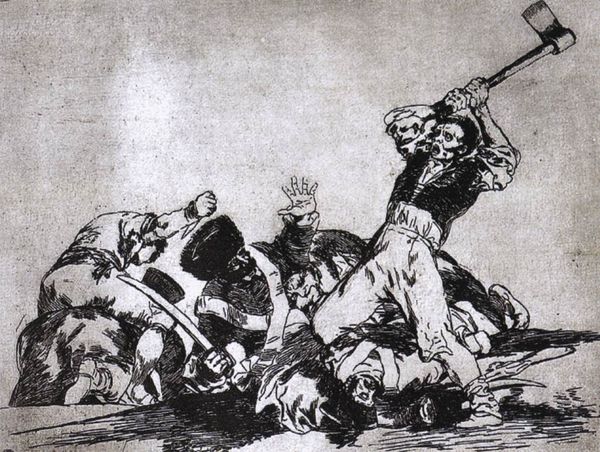
print, etching
#
allegories
#
allegory
#
narrative-art
#
symbol
# print
#
etching
#
war
#
charcoal drawing
#
figuration
#
soldier
#
romanticism
#
history-painting
#
realism
Dimensions: 15.8 x 20.8 cm
Copyright: Public domain
Editor: Here we have Francisco de Goya's etching, "What more can one do?", created around 1815. It’s quite stark, isn't it? The scene is unsettling, portraying violence and despair with incredible detail. What do you see in this piece? Curator: I see a confluence of cultural trauma and Goya's symbolic language. The fallen figure immediately evokes Christian iconography, the deposition from the cross, a symbol of sacrifice and suffering. However, that symbol is turned on its head; the sacrifice is meaningless, brutal, a product of war's relentless machine. Editor: Meaningless? Curator: Yes, look at the soldiers. Their faces are obscured, almost robotic. They represent the faceless forces of oppression, devoid of empathy. The crescent on the one soldier's hat suggests an Ottoman connection, but is more likely symbolic of a foreign invader. The message seems to ask if cultural symbols can ever fully encapsulate or justify the horrors humanity inflicts upon itself. How does that resonate with you? Editor: It makes me think about how symbols can be twisted, or used to justify violence. Curator: Precisely. And Goya forces us to confront this. Even the title, "What more can one do?" is a loaded question, steeped in cultural and historical layers. Is it a cry of helplessness? Or a challenge? Editor: I think it is a cry. It's hard to look at, but incredibly powerful. I now see this work as more than just a depiction of war, but also a statement about the manipulation of cultural identity. Curator: Indeed. It’s a grim reminder of how symbols can be weaponized, losing their original intent and adding to the weight of cultural memory. A sentiment that sadly, still echoes today.
Comments
No comments
Be the first to comment and join the conversation on the ultimate creative platform.
